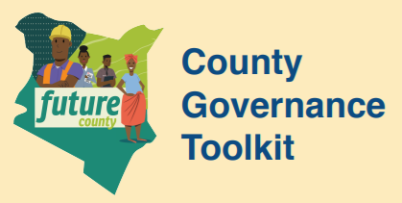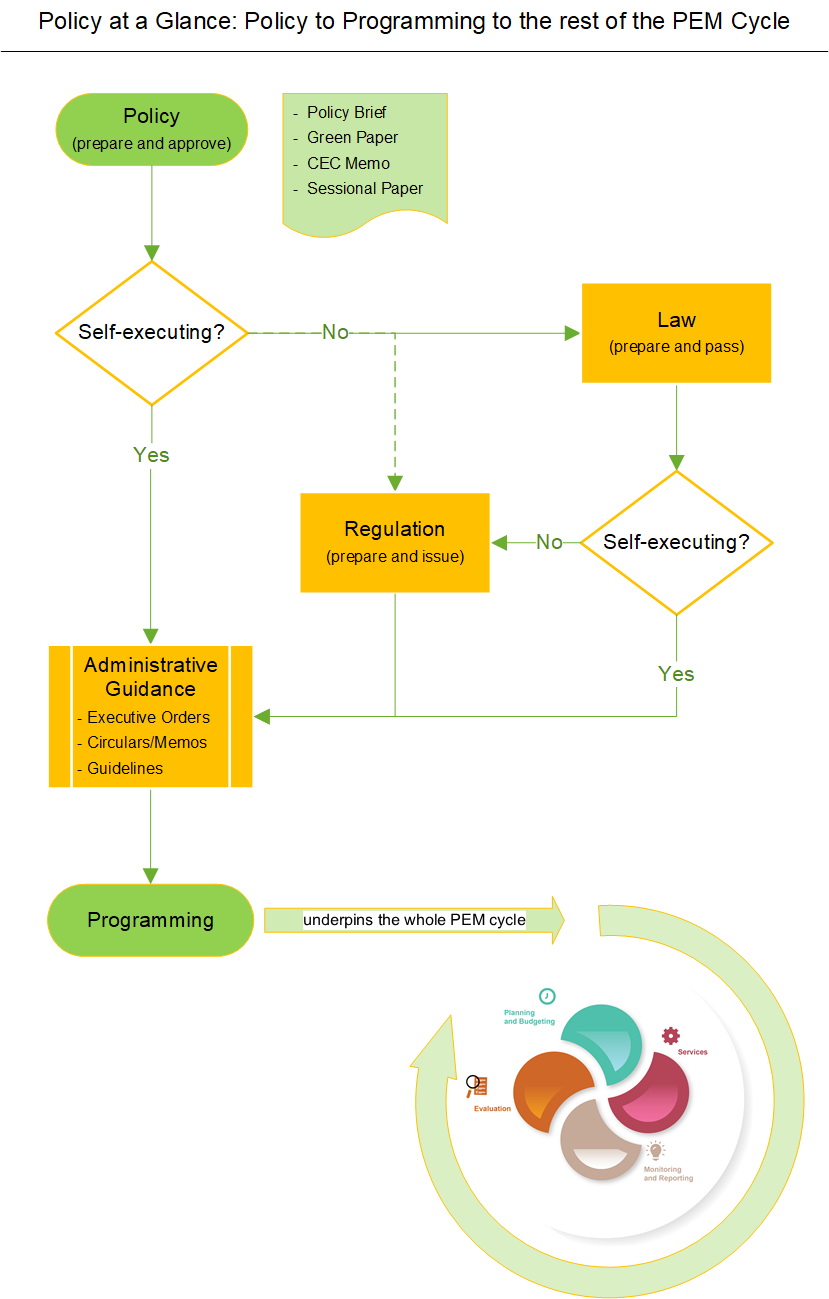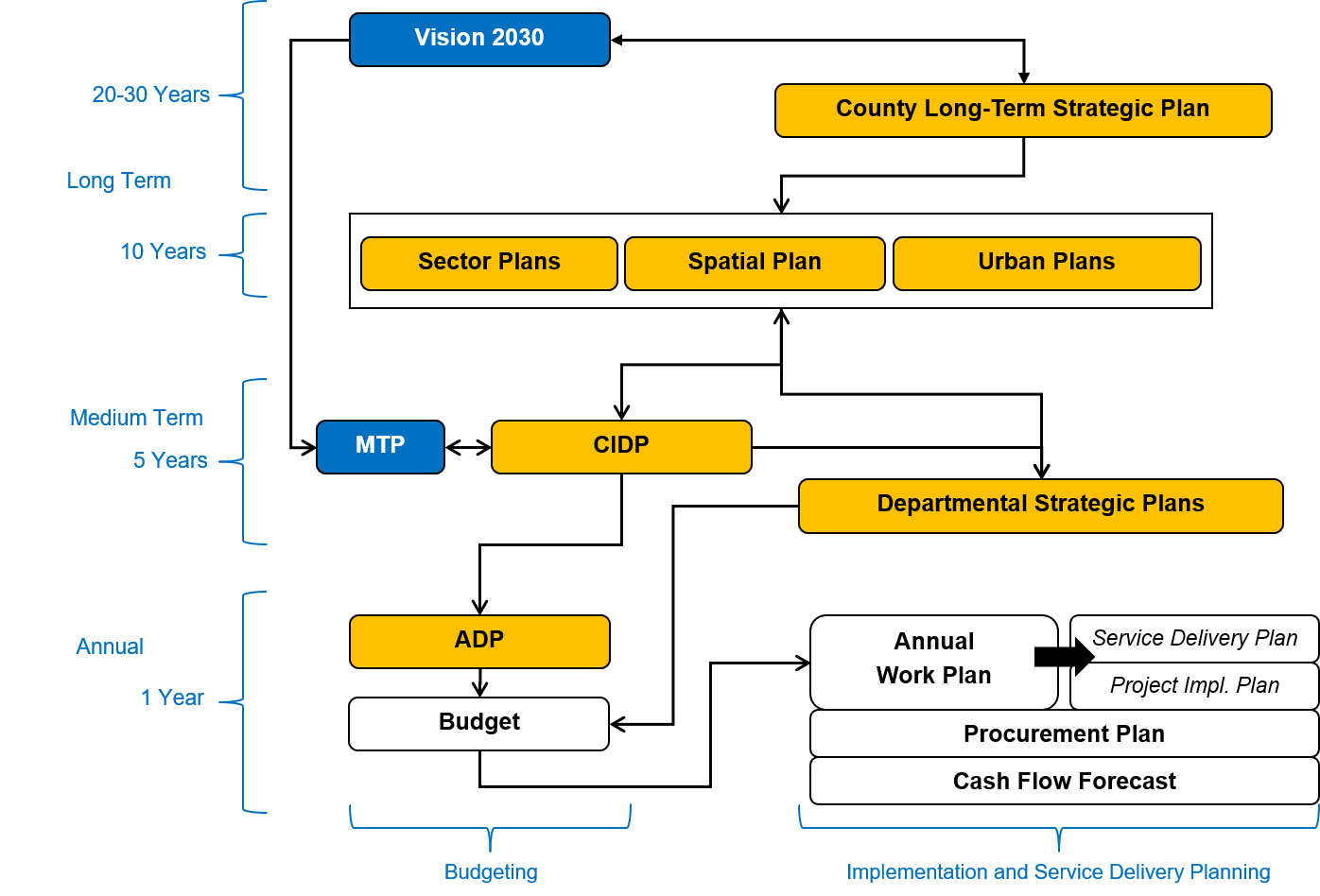Most likely, this very week or month your county government is making decisions that have an impact on your life by changing the quality of services you expect to receive or by setting new rules or taxes you are expected to comply with. In fact, county governments are quite busy complying with their regular annual business (visit the County Calendar page for more details on the Budgeting, Implementation and Reporting calendars) and with their longer terms tasks such as developing or reviewing the CIDP, formulate a new policy or legislation, a spatial or sector plan, etc. You can visit the Public Expenditure Management page for more information on the main county processes.
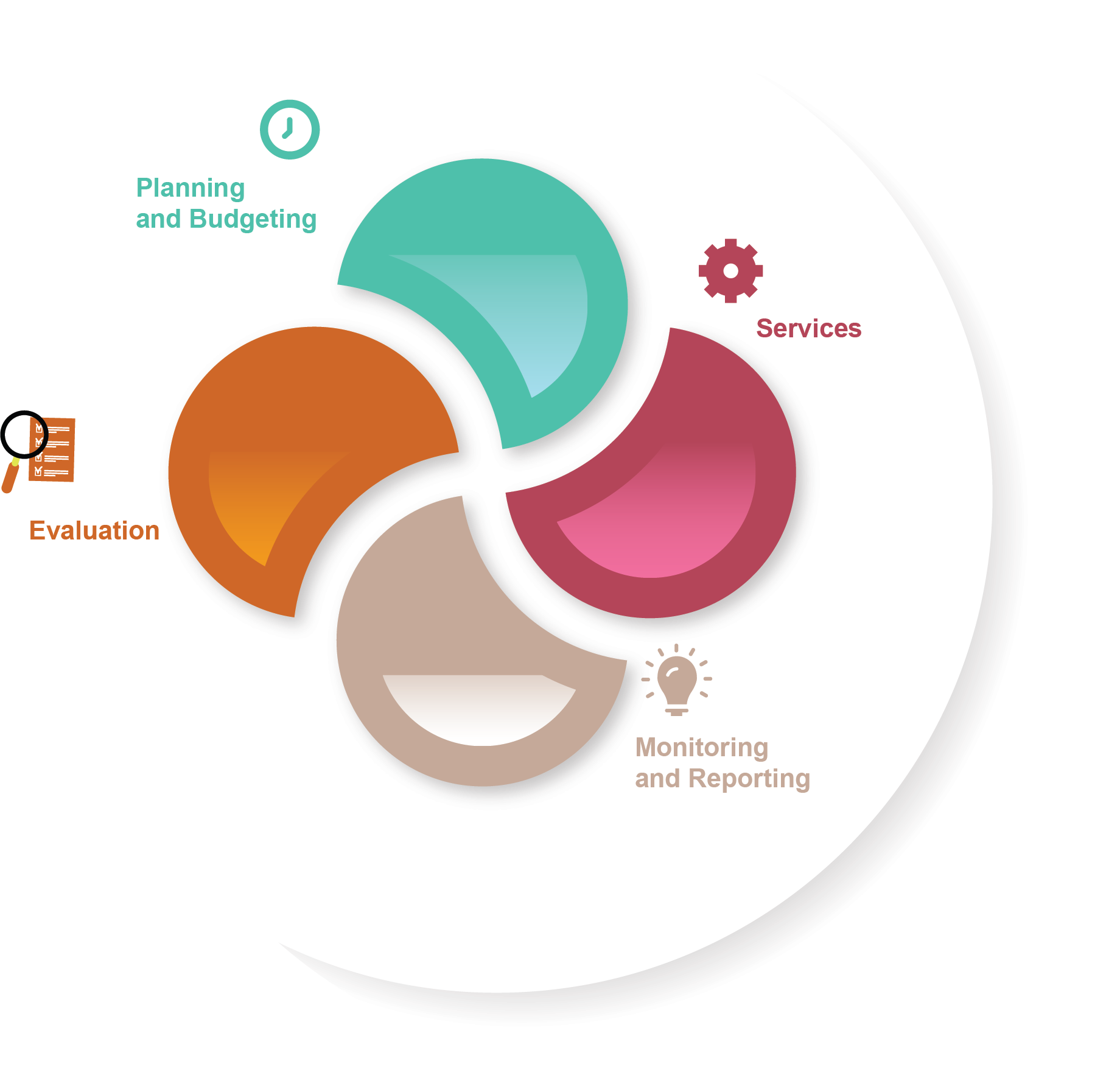
What are the best avenues to have your voice heard in these decisions?
Citizens can individually participate in public hearings and submit petitions to the Executive and Assembly – written words usually carry more weight than a comment voiced at a hearing – but can also work through more formal channels:
- The Member of the County Assembly (MCA) representing your ward is expected to represent her constituents in the County Government – reach out to her to voice your opinion and requests
- Organized groups of citizens or businesses can be more effective than single individuals at conveying messages and shaping decisions – learn what organizations are working in your county and are representing your interests
- Sector Working Groups (SWGs) and the County Budget and Economic Forum (CBEF) are institutional spaces in which the County opens its doors to inputs and feedback from the private sector and civil society – use them to their full potential (more on SWGs and CBEF below)
Below you will find more information on how to participate in key decisions and governance processes
Policymaking broadly refers to the process used by a government to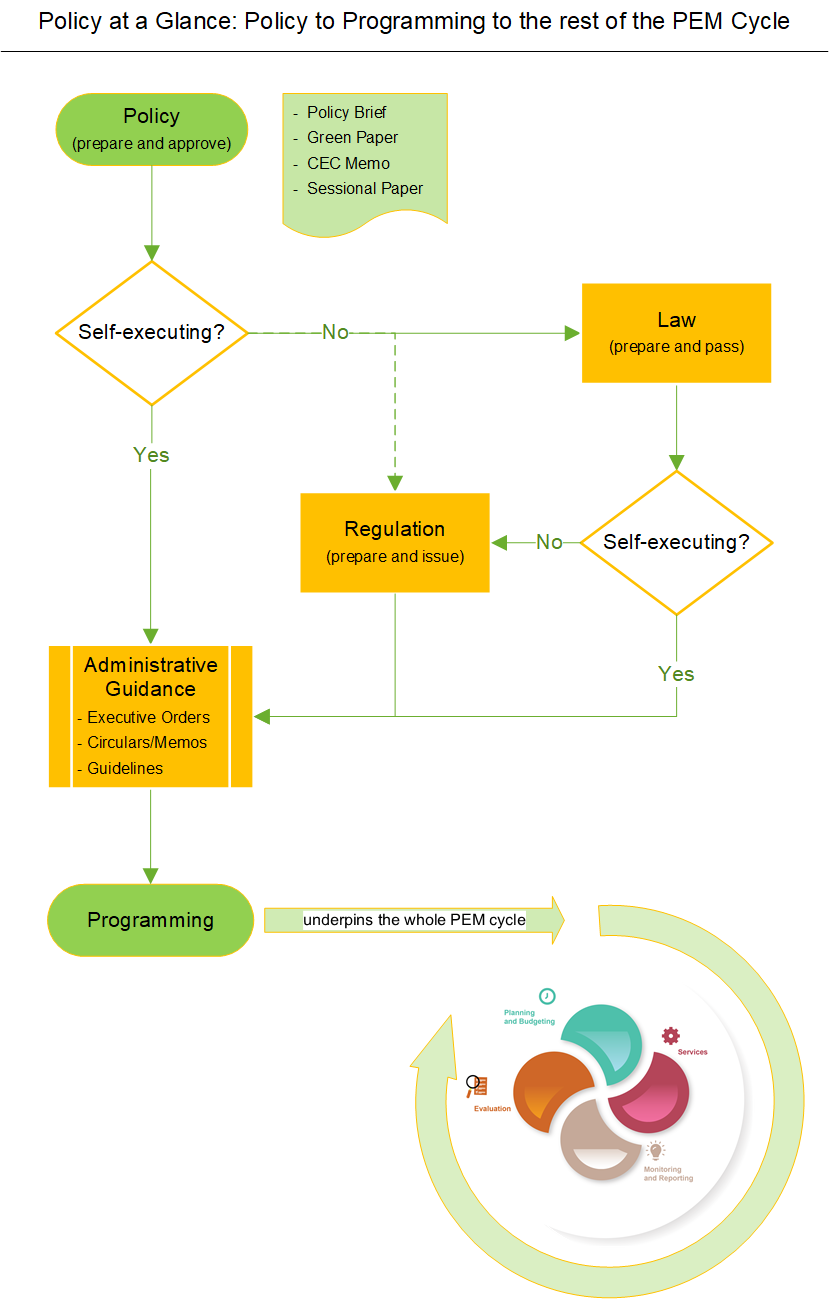
decide what to do (or not to do) about a public problem or issue that requires its attention and action.
Some policies can be implemented through administrative measures and regular government programs, others require the adoption of a new law or changes (amendments) to an existing one.
Ideas for changes in policy or law can originate from any citizen or group and then be adopted by county leaders. Usually the County Executive is involved in the development of policy and legislative proposals, but they can also be formulated directly by the County Assembly. What doesn’t change are the final steps: to become official documents, both policies and laws need to be approved by the Assembly and assented to by the Governor (Executive).
The County Executive and Assembly are required by the Constitution to facilitate citizens participation in these important decisions during the formulation (Executive) and before approval (Assembly).
Follow these links to learn more about Policy Making and the Legislative Process
The following are examples of contributions you might want to make or questions you might want to ask when participating in policy and law making

Resources
Laws and Regulations
Guidelines and Tools
County Public Participation Guidelines. Ministry of Devolution and Planning (MoDP), Council of Governors (CoG). 2016
A guide to the legislative process in Kenya, KLRC, 2015
Jukumu Langu: Me and the County Government, State Department for Devolution and CoG, 2019
County development plans should answer 
all these questions in a coherent and understandable way. This is particularly important because Kenyan law requires that all government spending is guided by planning.
Counties are required to produce multiple interconnected plans – ranging from long-term to annual plans – and public participation is required in each of them:
- Long-term Strategic Plans: the equivalent of Vision 2030 for the country, these plans set the long-term vision, development priorities and pillars for the whole county and every stakeholder, such as government, private
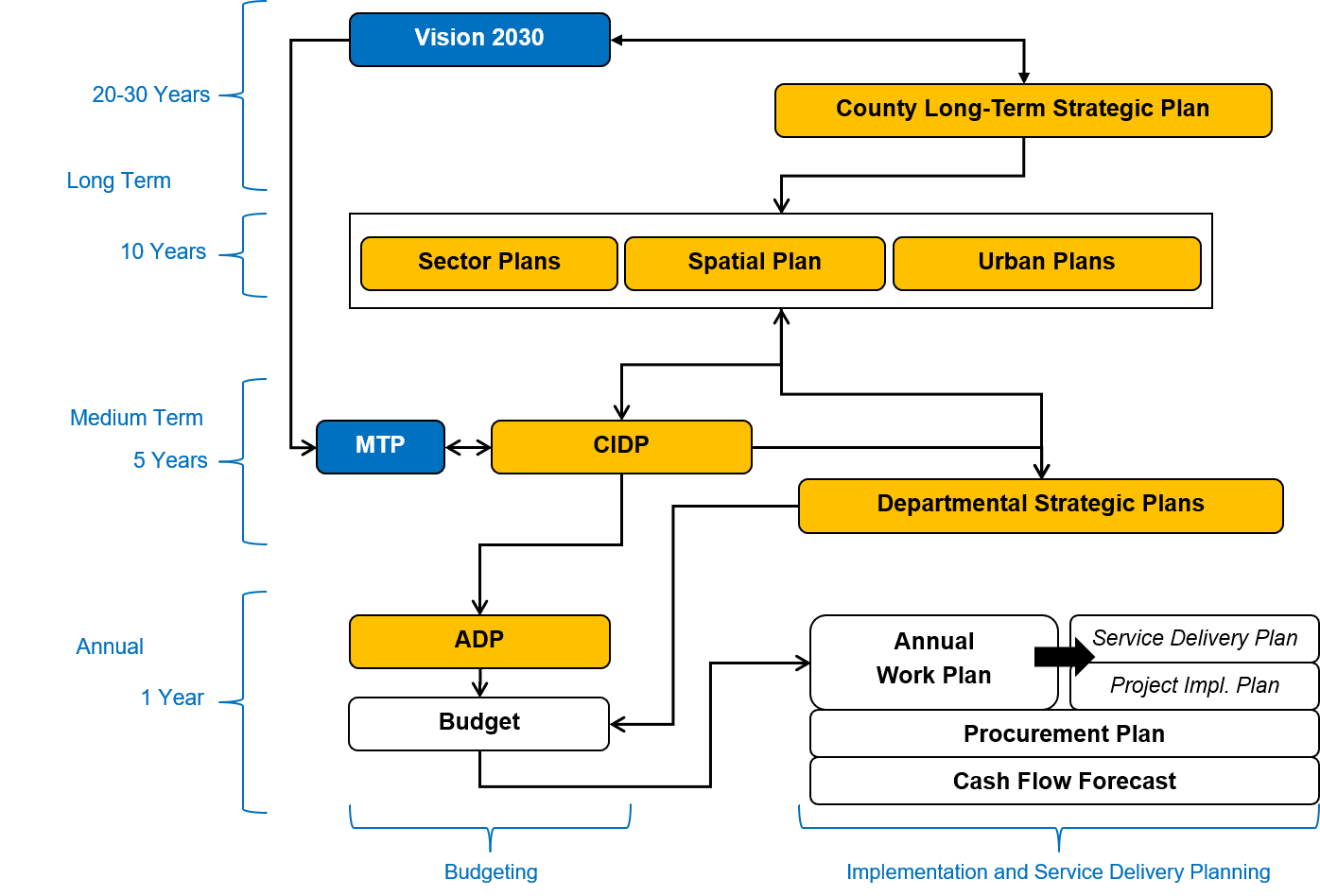 sector and civil society.
sector and civil society. - County Spatial Plan that outlines how the county will manage land and development
- Cities and Urban Areas plans that focus on the organization and development of infrastructure and services in urban areas
- Sector Plans outline the key service delivery outcomes – and the programmes set up to achieve them – for each county government function (e.g. Health, Infrastructure, Agriculture, etc.)
- The County Integrated Development Plan (CIDP) that brings together the plans listed above into one document that sets the priorities and direction of county government spending over the duration of the newly elected government
- The Annual Development Plan (ADP), that connects the CIDP with the Budget by detailing the programs and projects that will be implemented the following year
For more on these development plans and how they connect with each other browse the Planning section of the Toolkit.
Citizens can get involved as individuals or through organizations that represent their interests and rights, participating to public forums and hearings, getting involved with or submitting petitions to the County Executive and/or Assembly, to Sector Working Groups or to the County Budget and Economic Forum.
Before participating in a planning meeting – when the plan is still being developed – any stakeholder might want to think about the following questions

Public participation might take place also after plans have been drafted and are being reviewed before approval – either during a draft validation conducted by the Executive or during the consultations conducted by the Assembly before debate and approval. At this stage, likely questions might be along the lines of

Resources on Public Participation in County Planning
County Public Participation Guidelines. Ministry of Devolution and Planning (MODP), Council of Governors (COG), 2016
Jukumu Langu: Me and the County Government. State Department for Devolution and Council of Governors (COG), 2019
Citizen Friendly County Integrated Development Plan (CIDP) Snapshot Template. AHADI, 2017
Handbook on County Planning, County Budgeting and Social Accountability. Institute for Economic Affairs (IEA) 2014
A Popular Guide to County Planning and Budgeting. The Institute for Social Accountability (TISA), 2013
Public participation in Budgeting – the annual process by which the government decides how to spend public resources the following fiscal year – revolves primarily around three main processes in which decisions are made:
- In August-September around the drafting and approval of the Annual Development Plan (see above)
- In February-March around the drafting and approval of the County Fiscal Strategy Paper (CFSP) which allocates resources to sectors and programs within them (the budget ceilings)
- In April-June when the Executive prepares the Budget Estimates and submit them to the Assembly for debate, approval and Budget Appropriation before the end of the fiscal year on June 30th. The appropriation gives the legal authority to the county departments to spend public funds to deliver services.
Citizens can also shape these decisions by getting involved in January in the preparation of, and providing feedback to, the Medium-term Expenditure Framework (MTEF) Sector Reports, which inform the CFSP ceilings, and in June-July in when the Assembly debates and approves the County Finance Bill to authorise the Executive to collect tax and other revenues from citizens.
When participating in the discussions around the draft Budget Estimates the following questions can be a useful starting point to engage with the county government:

For more details and information on the annual county budgeting process please visit the Budgeting section of the Toolkit.
Resources on Public Participation in County Budgeting
County Public Participation Guidelines. Ministry of Devolution and Planning (MODP), Council of Governors (COG), 2016
Jukumu Langu: Me and the County Government. State Department for Devolution and Council of Governors (COG), 2019
County Budget Operational Manual. The National Treasury, 2014
Citizen Friendly County Integrated Development Plan (CIDP) Snapshot Template, AHADI, 2017
Handbook on County Planning, County Budgeting and Social Accountability. Institute for Economic Affairs (IEA) 2014
A Popular Guide to County Planning and Budgeting. The Institute for Social Accountability (TISA), 2013
These institutions are critical to an effective participation of citizens in county governance – the degree to which the county government develop and support them is a clear indicator of their willingness to comply with the constitutional mandate to facilitate effective engagement and participation of the public in government affairs.
The County Budget and Economic Forum (CBEF) is set up to coordinate and collect views from the public during the planning budgeting process and function as a think-tank for the County government in terms of financial and economic policy and management. The CBEF assists the county to analyse and identify its priorities as they plan and budget for programs, to improve coordination between the citizens and government and improve harmonization of project implementation and funding. Chaired by the Governor, CBEF is composed CEC members and at least an equal number of persons nominated by organisations representing professionals, business, labour issues, women, persons with disabilities, the elderly and faith-based groups at the county level.
What does CBEF do?
Provides a means of consultation on:
- Preparation of County plans, the Count Fiscal Strategy Paper (CFSP) and County Budget Review and Outlook Paper (CBROP).
- Matters relating to budgeting, the economy and financial management.
Who are CBEF members?
- Governor (Chair)
- Members of County Executive Committee
Representatives of:
- Professionals
- Business
- Labour issues
- Women
- Persons with disabilities
- The elderly
- Faith based groups
Sector Working Groups (SWGs) are meant to facilitate government coordination across departments and with sector stakeholders in the design of programmes and budgets. They represent the main mechanism for counties to engage with the public on technical matters. Stakeholders with a specific area of interest can engage with county officials in the identification of sector priorities, formulation of strategies and programs, implementation of activities and preparation of sector reports. Well-functioning SWGs can do much more than improving participation and transparency, they can become vital spaces for the establishment of partnerships between government, private sector and civil society at large, for the mobilization of technical and financial resources and the improvement of service delivery and sector outcomes
What do SWGs do?
- Identify sector priorities and rank them by their relevance to county goals.
- Prepare sector reports.
- Facilitate communication between county government and each sector.
Who are SWG members?
County Executive
- Senior Officer County Treasury (Chair)
- 1 County Planning Department Official
- Up to 3 Officials from relevant sector department
Community
1 representative from each stakeholder group for the sector (by invitation):
- Professional Associations
- Tertiary Education Associations
- Commercial and Industry groups
- Worker affiliated groups
- NGOs and CBOs
- 2 representatives from village groups
The link between the CBEF and SWGs responds to the administrative structure and their composition. While the CBEF is established at the helm of the decision-making process at the county government, the SWGs are established at the strategic operational levels. Technically, therefore, the SWGs will work in response to the strategic and policy direction made at the CBEF.
Resources
Public Finance Management Act, 2012
Guidelines for formation and functioning of CBEF. Commission on Revenue Allocation (CRA), 2018
Technical Reference for the County Budget and Economic Forum (CBEF) & Sector Working Groups (SWGs), 2018, AHADI.
County Budget Operational Manual. The National Treasury, 2014
